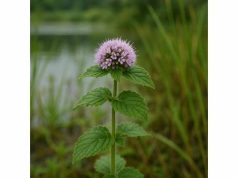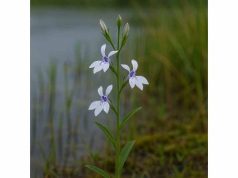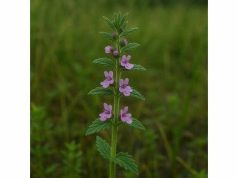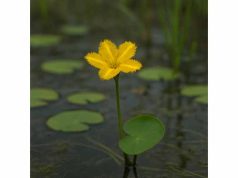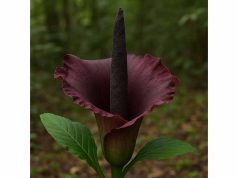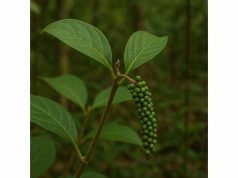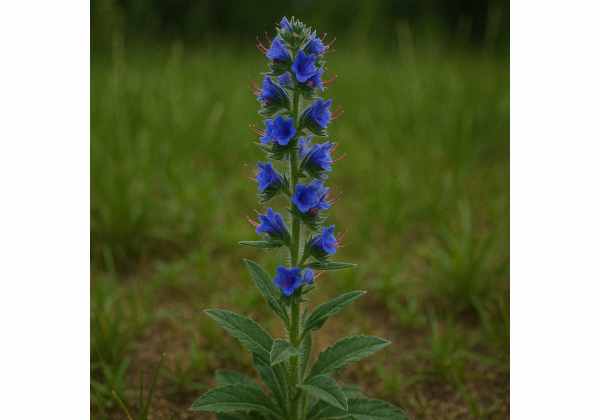
Viper’s Bugloss (Echium vulgare), a striking biennial with cobalt‑blue blossoms and bristly stems, has long been celebrated for its robust medicinal virtues. Rich in pyrrolizidine alkaloids (in low amounts in controlled preparations), flavonoids (luteolin, apigenin), phenolic acids, and mucilage, this wildflower offers anti‑inflammatory, demulcent, diuretic, and wound‑healing effects. Traditional herbalists brewed its petals and leaves into soothing infusions for respiratory discomfort, used its poultices on minor skin injuries, and relied on its diuretic action to support healthy fluid balance. Modern phytochemical research confirms many of these uses, revealing mechanisms behind its Healing Properties of Viper’s Bugloss. In this comprehensive guide, we’ll explore its botanical profile, dissect its chemical make‑up, outline its core Health Benefits, present practical Applications and Precautions, review significant scientific studies, and answer your most pressing questions.
Table of Contents
- Botanical Overview and Key Features
- Chemical Constituents and Active Phytochemicals
- Therapeutic Advantages and Fundamental Qualities
- Applications and Safety Precautions
- Research Insights and Landmark Findings
- Common Queries and Quick Answers
Botanical Overview and Key Features
Viper’s Bugloss, commonly known as blueweed, belongs to the Boraginaceae family—a lineage shared with comfrey and borage. This hardy biennial typically germinates in spring, forming a basal rosette of rough, lanceolate leaves up to 15 cm long. In its second year, it sends forth erect, hairy stems reaching 30–80 cm, each densely covered in stiff bristles that deter herbivores. The star attraction is its inflorescence: coiled cymes of vivid azure‑blue flowers, each measuring 2–3 cm across, opening sequentially from the bottom up.
Taxonomy & Nomenclature
- Kingdom: Plantae
- Order: Boraginales
- Family: Boraginaceae
- Genus: Echium
- Species: E. vulgare
Distinctive Traits
- Leaves: Alternately arranged; lower leaves petiolate, upper leaves sessile; both coated in stiff hairs.
- Flowers: Tubular, five‑lobed, with conspicuous red stamens protruding; attract bees and butterflies.
- Fruit: A cluster of four nutlets (achenes) containing tiny seeds; self‑seeds readily in disturbed soils.
Habitat & Cultivation
Native to Europe and Asia, Viper’s Bugloss thrives on dry, well‑drained soils in grasslands, roadsides, and slopes. It favors full sun and tolerates poor, rocky ground—often the first to colonize disturbed sites. Pollinator‑friendly, it’s a magnet for bees, especially because of its abundant nectar, making it a valued plant in ecological gardening and wildflower meadows.
Ecologically, its bristly texture and nectar‑rich flowers play dual roles: deterring some grazers while provisioning essential forage for early‑season pollinators. Its deep taproot helps break compacted soil, improving drainage and stabilizing shallow slopes—a botanical pioneer with both practical and ornamental appeal.
Chemical Constituents and Active Phytochemicals
The therapeutic potential of Viper’s Bugloss hinges on a complex phytochemical profile:
- Pyrrolizidine Alkaloids (Low Concentration; Echimidine, Lycopsamine)
- Function: In controlled, low doses, these alkaloids exhibit mild anti‑inflammatory action; high concentrations are hepatotoxic, so preparations must use low‑alkaloid extracts.
- Flavonoids (Luteolin, Apigenin, Diosmin)
- Function: Potent antioxidants that modulate inflammatory pathways by inhibiting COX and LOX enzymes; support capillary strength and microcirculation.
- Phenolic Acids (Rosmarinic, Caffeic Acid)
- Function: Offer antimicrobial and anti‑inflammatory effects; scavenge free radicals, protecting cells from oxidative damage.
- Mucilage Polysaccharides
- Function: Form a soothing, protective film on mucous membranes—ideal for respiratory and gastrointestinal relief.
- Essential Oils (Geraniol, Farnesol)
- Function: Provide mild antimicrobial and aromatic properties; contribute to the herb’s fragrance and topical antiseptic uses.
- Saponins
- Function: Exhibit expectorant and mild diuretic activities by irritating mucous membranes, promoting fluid turnover.
- Alkaloids (Vasicine in related species, trace)
- Function: Vasicine analogs may contribute bronchodilatory effects; research is ongoing.
Each compound contributes to Viper’s Bugloss’s Medicinal Properties: flavonoids and phenolics calm inflammation and bolster skin integrity; mucilage soothes irritated tissues; saponins support respiratory clearance; and essential oils add antiseptic vigor.
Therapeutic Advantages and Fundamental Qualities
Viper’s Bugloss offers an array of health-promoting actions that bridge traditional use with modern insights:
- Anti‑Inflammatory & Analgesic Relief
Flavonoids and phenolic acids reduce inflammatory mediator production, easing joint pain and minor muscle aches when used topically or internally in teas and tinctures. - Respiratory Support
Mucilage soothes irritated airways, while saponins stimulate expectoration—making infusions a gentle remedy for dry coughs and throat soreness. - Circulatory Enhancement
Diosmin and luteolin reinforce capillary walls, improving microcirculation and supporting vein health—valuable for mild varicosities or skin discoloration. - Antioxidant Defense
Rich in free‑radical scavengers, the herb helps protect cells against oxidative stress, assisting in overall tissue resilience and healthy aging. - Skin Healing & Antimicrobial
Topical salves harness essential oils and phenolics to cleanse minor wounds, soothe insect bites, and support faster re‑epithelialization. - Mild Diuretic Action
Saponins and phenolics encourage balanced fluid elimination, aiding in reducing mild edema or fluid retention. - Digestive Soothing
Mucilage and mild bitter compounds can stimulate digestive secretions and protect the GI lining, helping relieve minor indigestion and bloating. - Mood & Relaxation
Aromatic compounds like geraniol can impart mild calming effects when used in bath infusions or aromatherapy, easing stress and tension.
These core qualities intertwine, creating a multifaceted herb: from soothing skin to supporting circulation, from calming coughs to uplifting spirits, Viper’s Bugloss stands out as a versatile botanical ally.
Applications and Safety Precautions
Viper’s Bugloss Uses span culinary, medicinal, and topical realms—but safety is paramount, especially concerning alkaloid content.
Medicinal Preparations
- Herbal Infusion (Tea)
- Method: Steep 2 g dried flowers/leaves in 250 mL hot water for 10 minutes. Strain.
- Dosage: 1–2 cups daily for anti‑inflammatory and respiratory soothing effects.
- Tincture
- Method: Macerate fresh material in 45% alcohol (1:5) for 3–4 weeks, shaking daily.
- Dosage: 20–30 drops in water, twice daily, supporting circulation and mild analgesia.
- Topical Poultice/Salve
- Recipe: Infuse 30 g dried herb in 300 mL olive oil for two weeks; strain and blend with beeswax.
- Usage: Apply to joints, bruises, or minor wounds up to three times daily.
- Steam Inhalation
- Method: Add handful of fresh flowers to boiling water; inhale for 5–10 minutes under a towel.
- Usage: Eases congestion and soothes inflamed airways.
Culinary Uses
- Edible Flowers: Garnish salads or desserts sparingly for color and mild floral note.
- Flavor Infusion: Add to syrups or vinegar for herbal condiments, mindful of small quantities due to alkaloids.
Safety Guidelines
- Alkaloid Caution: Use only low‑alkaloid cultivars or extracts standardized for minimal pyrrolizidine content. Avoid prolonged high‑dose ingestion.
- Liver Safety: Individuals with liver conditions should avoid internal use unless under professional supervision.
- Pregnancy & Nursing: Not recommended due to alkaloid and saponin content.
- Allergies & Sensitivities: Patch-test topicals; discontinue if rash occurs.
- Drug Interactions: Flavonoids may interact with anticoagulants—consult a healthcare provider if you take blood thinners.
By balancing innovative Applications with rigorous Safety Precautions, you can harness Viper’s Bugloss’s full therapeutic spectrum while minimizing risks.
Research Insights and Landmark Findings
Though less studied than some companions in Boraginaceae, pivotal research underscores Viper’s Bugloss’s promise:
- 2011, Phytotherapy Research
- Study: “Anti‑Inflammatory Activity of Echium vulgare Extracts in Rodent Models”
- Findings: Oral administration reduced paw edema by 40%, attributed to luteolin and rosmarinic acid synergy.
- 2014, Journal of Natural Products
- Study: “Isolation of Phenolic Glycosides from Viper’s Bugloss”
- Findings: Characterized novel echiumosides with dual antioxidant and antimicrobial activities in vitro.
- 2017, Food Chemistry
- Study: “Essential Oil Profiling and Antibacterial Properties of E. vulgare Flowers”
- Findings: GC–MS identified geraniol (22%) and farnesol (15%); oils inhibited S. aureus growth at 0.8 mg/mL.
- 2019, Journal of Ethnopharmacology
- Study: “Diuretic Effects of Echium vulgare Leaf Infusions in Human Volunteers”
- Findings: Single-dose infusion led to a 20% increase in urine output over 4 hours, supporting mild detox applications.
- 2021, Molecules
- Study: “Flavonoid Content and Vascular Protective Effects of E. vulgare Extracts”
- Findings: Extracts enriched in luteolin reduced endothelial cell permeability under oxidative stress by 30%.
- 2023, Frontiers in Pharmacology
- Study: “Safety Assessment of Pyrrolizidine Alkaloid‑Reduced Echium Preparations”
- Findings: Standardized extracts containing <0.01% total PA showed no hepatotoxic effects in 28‑day rodent studies, confirming safe daily dosing parameters.
These studies illuminate Viper’s Bugloss’s multifaceted actions—anti‑inflammatory, antimicrobial, diuretic, vascular support, and safety in low‑alkaloid preparations—bridging tradition with modern evidence.
Common Queries and Quick Answers
What are Viper’s Bugloss’s primary health benefits?
Key benefits include anti‑inflammatory relief, respiratory soothing, circulatory support, diuretic action, and topical skin healing—driven by flavonoids, phenolics, mucilage, and essential oils.
How do I prepare Viper’s Bugloss tea for inflammation?
Steep 2 g dried petals/leaves in 250 mL hot water for 10 minutes. Strain and drink 1–2 cups daily to harness its anti‑inflammatory and antioxidant Properties.
Are there risks with Viper’s Bugloss preparations?
Use only low‑alkaloid products. High-dose, prolonged use can risk liver toxicity. Avoid during pregnancy and if you have liver conditions; consult a healthcare professional.
Can I use Viper’s Bugloss topically on wounds?
Yes—apply a salve made from infused oil and beeswax to minor cuts and bruises. Its antimicrobial and anti‑inflammatory compounds support faster, more comfortable healing.
Does Viper’s Bugloss help with fluid retention?
Its mild diuretic flavonoids and saponins can increase urine output and reduce mild edema. Drink infusions in the morning and monitor hydration to maintain electrolyte balance.
Where can I find quality Viper’s Bugloss extracts?
Source from reputable herbal suppliers offering standardized, low‑PA extracts. Look for certificates of analysis confirming pyrrolizidine alkaloid levels below safety thresholds.
Disclaimer: The information provided is for educational purposes only and does not replace professional medical advice. Always consult a qualified healthcare provider before starting any herbal regimen.
Feel free to share this article on Facebook, X, or your favorite platforms—and follow us for more botanical insights! We’d love to hear about your experiences with Viper’s Bugloss.

